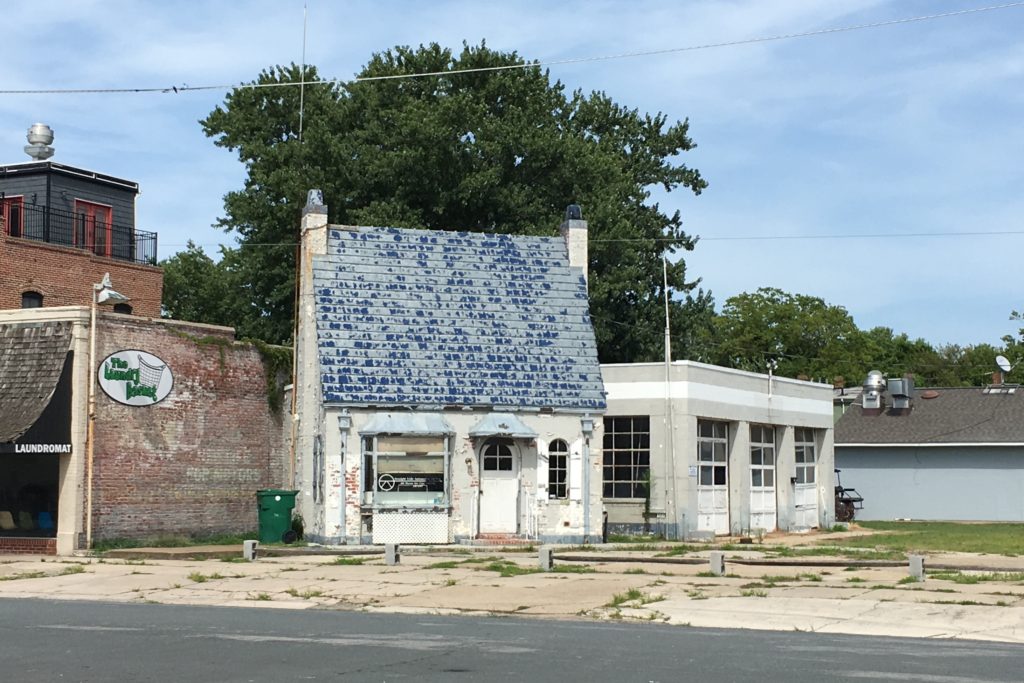
On the corner of Mason Avenue in the bayside town of Cape Charles, Virginia, is this abandoned Pure Oil gas station. Pure Oil designed these cottage-like filling stations in the late 1920s, and variations on this theme were constructed for several decades. This shows the design at its most simple form. The station still has the original “Pure Oil Blue” roof and most of its original features (compare it with the two historic photos from Pennsylvania and New York below). The three-bay garage on the side is likely a later addition.
Carl August Petersen created this Tudor Revival/English Cottage design in 1927 with the goal of presenting their Pure Oil as a safe, clean, and welcoming place to get gasoline. The standardized design also served to identify their brand to consumers, no matter where they were traveling.
The Pure Oil company was bought by Union Oil in the 1960s, and by the early 1970s, Pure Oil gas stations were rebadged as Union 76 stations. The Mason Avenue station remained in use as a gas station until fairly recently. A second Pure Oil building survives on the outskirts of Cape Charles. Many other Pure Oil stations have been repurposed into restaurants or for other uses, and several have been listed on the National Register of Historic Places, including a 1937 station in Geneva, Illinois. More examples can be seen at RoadsideArchitecture.




